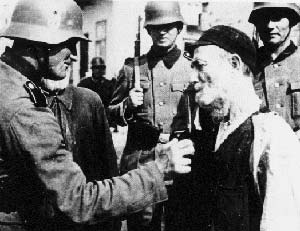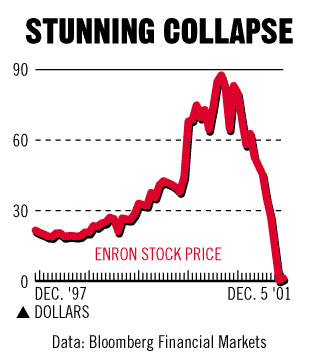
I’ve missed more than 9000 shots in my career. I’ve lost almost 300 games. 26 times, I’ve been trusted to take the game winning shot and missed. I’ve failed over and over and over again in my life. And that is why I succeed.–Michael Jordan
What is a Moat?
Moats are structural characteristics of a business that are likely to persist for a number of years, and that would be very hard for a competitor to replicate. Management is not a moat. The best poker player with a pair of deuces can’t beat a beginner with a straight flush.
Moats are not great products, strong market share, great execution and good management.
Part Two: A Professor discusses WMT Case Study
See Part 1: http://wp.me/p1PgpH-j0
Part Two: The Professor continues his talk on Wal-Mart’s success.
First used in grocery supermarkets, bar-code scanners at retail checkout stations are now ubiquitous. Mass merchandisers began to use them in the early 1980s. Most retailers saw the bar-code scanner as a way of eliminating the cost of constantly changing the price stickers on times. But Wal-Mart went further, developing its own satellite-based information systems. Then it used this data to manage its inbound logistics system and traded it with suppliers in return for discounts.
Susan, a human resources executive, suddenly perks up. Isolating one small policy has triggered a thought. I gave a talk the day before on “complementary” policies and she sees the connection. “By itself,” she says, “it doesn’t help that much. Kmart would have to move the data to distribution centers and suppliers. It would have to operate an integrated inbound logistics system.”
Good,” I say, and point out to everyone that Wal-Mart’s policies fit together—the bar codes, the integrated logistics, the frequent just-in-time deliveries, the large stores with low inventory—they are complements to one another, forming an integrated design. This whole design—structure, policies, and actions—is coherent. Each part of the design is shaped specialized to the others. The pieces are not interchangeable parts. Many competitors do not have much of a design, shaping each of their elements around some imagined “best practice” form. Others will have more coherence but will have aimed their designs at different purposes. In either case, such competitors will have difficulty in dealing with Wal-Mart. Copying elements of its strategy piecemeal, there will be little benefit. A competitor would have to adopt the whole design, not just a part of it.
The professor suggests that WMT incorporated the bar-code scanners into an integrated process that a competitor couldn’t copy at least in the short run. When a company invents a process advantage, competitors can eventually copy that. I see WMT using a technology to lower costs within the company’s regional economies of scale advantage. Even if Kmart could lower its costs with the same technology, it was still at a disadvantage in terms of cost structure versus WMT.
There is much more to be discussed: first-mover advantages, quantifying its cost advantage, the issue of competence and learning developed over time, the function of leadership, and whether this design can work in cities. We proceed.
With fifteen minutes to go, I let the discussion wind down. They have done a good job analyzing Wal-Mart’s business, and I say so. But, I tell them, there is one more thing. Something I barely understand but that seems important. It has to do with the “conventional wisdom”—the phrase from the case I put on the whiteboard at the beginning of the class: “A full-line discount store needs a population base of at least 100,000.”
I turn to Bill and say: “You started us out by arguing that Walton broke the conventional wisdom. But the conventional wisdom was based on the straightforward logic of fixed and variable cost. It takes a lot of customers to spread the overhead and keep costs and prices low. Exactly how did Walton break the iron logic of cost?”
I push ahead, putting Bill into a role: “I want you to imagine that you are a Wal-Mart store manager. It’s 1985 and you are unhappy with the whole company. You feel that they don’t understand your town. You complain to your dad, and he says, ‘Why don’t we just buy them out” We can run the store ourselves.’ Assuming Dad has the resources, what do you think of his proposal?”
Bill blinks, surprised at being put on the spot for a second time. He thinks a bit, then says, “No it is not a good idea. We couldn’t make a go of it alone. The Wal-Mart store needed to be part of the network.”
I turn back the whiteboard and stand right next to the boxed principle: “A full-line discount store needs a population base of at least 100,000.” I repeat his phrase, “The Wal-Mart store needs to be part of the network,” while drawing a circle around the word “store.” Then I wait.
With luck, someone will get it. As one student tries to articulate the discovery, others get it, and I sense a small avalanche of “Ahas,” like a pot of corn kernels suddenly popping. It isn’t the store; it is the network of 150 stores. And the data flows and the management flows and a distribution hub. The network replaced the store. A regional network of 150 stores serves a population of millions! Walton didn’t break the conventional wisdom; he broke the old definition of a store. If no one gets it right away, I drop hints until they do.
When you understand that Walton redefined the notion of “store,” your view of how Wal-Mart’s policies fit together undergoes a subtle shift. You begin to see the interdependencies among location decisions. Store locations express the economics of the network, not just the pull of demand. You also see the balance of power at Wal-Mart. The individual store has little negotiation power—its options are limited. Most crucially, the network, not the store, became Wal-Mart’s basic unit of management.
In making an integrated network into the operating unit of the company, instead of the individual store, Walton broke with an even deeper conventional wisdom of his era: the doctrine of decentralization that each kettle should sit on its own bottom. Kmart had long adhered to this doctrine, giving each store manager authority to choose product lines, pick vendors, and set prices. After all, we are told that decentralization is a good thing. But the oft-forgotten cost of decentralization is lost coordination across units. Stores that do not choose the same vendors or negotiate the same terms cannot benefit from an integrated network of data and transport. Stores that do not share detailed information about what works and what doesn’t can’t benefit from one another’s learning.
If your competitors also operate this kind of decentralized system, little may be lost. But once Walton’s insights made the decentralized structure a disadvantage, Kmart had a severe problem. A large organization may balk at adopting a new technique, but such change is manageable. But breaking with doctrine—with one’s basic philosophy—is rare absent a near-death experience.
The hidden power of Wal-Mart’s strategy came from a shift in perspective. Lacking that perspective, Kmart saw Wal-Mart like Goliath saw David—smaller and less experienced in the big leagues. But Wal-Mart’s advantages were not inherent in its history or size. They grew out of a subtle shift in how to think about discount retailing. Tradition saw discounting as tied to urban densities, whereas Sam Walton saw a way to build efficiency by embedding each store in a network of computing and logistics. Today we call this supply chain management, but in 1984 it was as an unexpected shift in viewpoint. And it had the impact of David’s slung stone.
Compare this discussion with Greenwald’s analysis of WMT in Ch. 5 of Competition Demystified. Do you agree with the professor that WMT has a network effect?
Hint: You are most likely to find the network effect in businesses based on sharing information (Amex), or connecting users together (Ebay, CME), rather than in businesses that deal in rival (physical goods). Of networks there will be few.
Cost advantages matter most in industries where price is a large portion of the customer’s purchase criteria.











